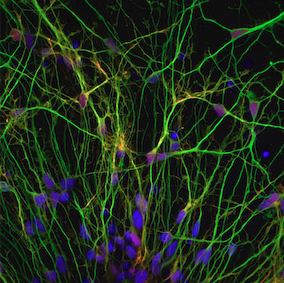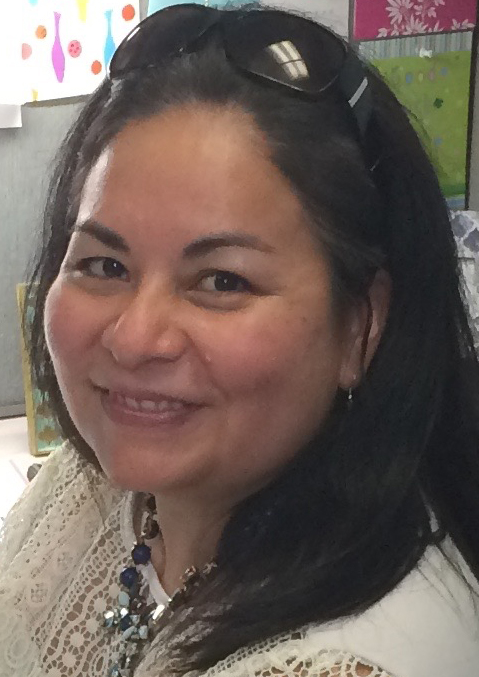Sofia B. Lizarraga, Ph.D., is an assistant professor in Department of Molecular Biology, Cell Biology and Biochemistry
Carney Institute (CI): Tell us a bit about yourself.
Sofia B. Lizarraga (SBL): I'm originally from Peru. I grew up in Lima and did most of my studies there. I got interested in science after learning about plant genetic engineering. I had the opportunity to come to the U.S. to continue my undergrad studies and took a developmental biology class and just fell in love with development. I thought it was fascinating that you could go from being a single cell to forming a whole organism. During this time, I got the opportunity to do research in a chemical biology lab and it was amazing, I couldn't think of doing anything else but doing research. That's how I decided to pursue a Ph.D.
My Ph.D. was in cell biology, looking at mechanisms of cell division in frogs. In my research, I studied a protein that was normally thought to function only in the nucleus. Interestingly, we found that it controls the assembly of the mitotic spindle, a key structure in cell division, and also interacts with proteins that are only expressed in neurons, which are non-dividing cells. This piqued my interest in neuroscience, specifically how different cytoskeletal mechanisms can contribute to neuronal development. So, for my postdoc, I went to a neurodevelopment lab where they studied rare genetic disorders of cortical malformations. With my background in cell division, I became interested in understanding how neural progenitors function and regulate the size of the brain and also in understanding the basic mechanisms that contribute to disorders of neuronal connectivity.
Throughout my training, I took risks and switched a lot of things, whether it was fields or biological systems. I wasn’t trained as a neuroscientist until I was a postdoc in Chris Walsh’s lab and, beyond finding a mouse in my kitchen, I had never dealt with mice as a research organism. Even during my time as an investigator in Eric Morrow’s lab, I switched systems again to induced pluripotent stem cells (iPSCs), human skin or blood cells reprogrammed to an early development state that can be differentiated into any cell type, including neurons, in a dish. iPSCs are the main model system my lab uses now to study human neuronal development. So, I guess careers don’t always follow a single trajectory, mine certainly hasn’t.
CI: What are the advantages of using induced pluripotent stem cells (iPSCs) as a model?
SBL: As a cellular neuroscientist, I like to look at things in a reductionist way and really focus on how gene mutations specifically affect different neural cell types at the cellular and molecular level during brain development. We cannot do biopsies at different stages of neuronal development in humans. Instead, iPSC technology has revolutionized how we study mechanisms of human brain development. It allows us to take adult cells (such as blood cells) from a person and basically turn back the clock, and reprogram them to become a stem cell, which we then coach to become any type of cell in the body. You can get cells from patients that have specific mutations to get a handle on the cellular and molecular mechanisms that underlie the pathogenesis of a given disease. Working with iPSC-based models is exciting from a neurodevelopmental perspective, because you're given access to tissue at a particular stage of human neuronal development that is otherwise inaccessible.
CI: Tell us about some of the ongoing research in your lab on neurodevelopmental disorders.
SBL: We are interested in understanding the molecular and cellular mechanisms that contribute to the pathogenesis of neuronal development disorders that are associated with autism, seizures and intellectual disability.

and DAPI - Image by J.A. Ward
Specifically, our research focuses on proteins that regulate the chromatin environment and how they contribute to the development of neuronal connectivity. Several of the genes that have high-risk variants associated with autism are chromatin and transcriptional regulators. We investigate how changes in the chromatin environment alter different gene programs and how that contributes to changes in neuronal structure and function. We are also interested in understanding how altering the chromatin environment can influence cell fate decisions early in human neuronal development. Using iPSCs as pre-clinical human models of early brain development, we can test potential rescue strategies to restore the cellular and molecular phenotypes associated with specific gene mutations. Our research hones in on basic mechanistic questions with translational applications.
We also plan to develop mouse models for several different projects we have in the lab and are currently collaborating closely with Judy Liu’s lab, which uses a mouse model to investigate a gene we study in the iPSCs. Therefore, we can merge information from both human systems at the cellular and molecular level and mouse systems at the circuit and behavioral level. I’m super excited that we get to collaborate with them on this.It’s a great advantage of being part of the close-knit community of all the labs in the Center for Translational Neuroscience.
CI: What advice do you have for young scientists beginning to get involved in research?
SBL: My main advice is don’t be afraid to try new things. Be curious and find the things you're passionate about. We might know our own field very well but sometimes our research requires us to learn something new, so don't be afraid to explore and be open to change. If the project requires you to answer a question with a technique that’s outside of your expertise, you have to go for it. Talk to people who are experts on the topics you need to understand.
Science isn’t done in a vacuum. It’s important to find people that you can confide in and build a support network (in any aspect of life that’s important). I’m very lucky to have had many great mentors that taught me how to think strategically and be a better scientist at different stages in my career. Your research environment is also important;, when people around you are very driven, it’s contagious and exciting. Research can be pretty hard, sometimes your experiments don’t work or your grants and papers get rejected, but what keeps us going is having that kind of passion. You don’t let your failures define you. Okay, maybe you feel sorry for yourself for a little bit, so you do what makes you feel good like going for a walk in the park, watching a sappy movie, or eating Milano cookies. But then you go back to your research and just keep working through whatever it is. Because that’s all we can do when we fail, we just pick up our pieces and go back at it again.
